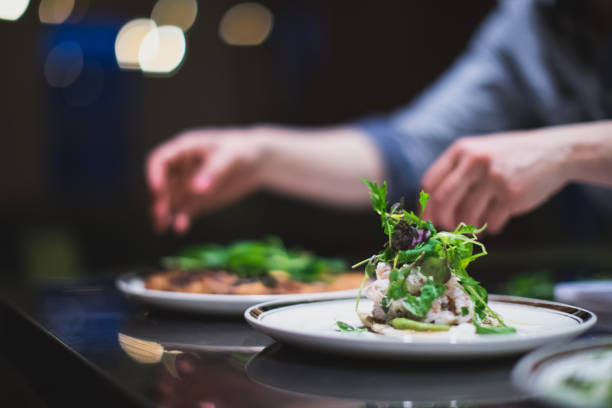Culinary Alchemy: Transforming Humble Ingredients into Gourmet Delights
Elevate your cooking game by mastering the art of transforming simple, everyday ingredients into restaurant-worthy dishes. This culinary alchemy isn't just about following recipes; it's about understanding flavors, textures, and techniques that can turn the ordinary into extraordinary.

Texture Transformation Techniques
Texture plays a crucial role in how we perceive and enjoy food. By manipulating the texture of ingredients, you can create dishes that are not only delicious but also intriguing to the palate. One technique to master is the art of crisping. For instance, transform ordinary chicken skin into a crunchy garnish by slowly rendering it between two sheet pans in the oven. This crispy chicken skin can elevate a simple salad or soup into a gourmet experience. Another texture-transforming technique is spherification, a molecular gastronomy method that turns liquids into caviar-like spheres. This can be achieved at home using sodium alginate and calcium lactate, turning simple fruit juices or sauces into elegant, burst-in-your-mouth garnishes that will impress any dinner guest.
The Power of Herb Oils and Infusions
Herb-infused oils are a simple yet effective way to add a gourmet touch to any dish. Create vibrant, flavor-packed oils by blending fresh herbs like basil, cilantro, or parsley with neutral oil, then straining through a fine-mesh sieve. These oils can be drizzled over soups, used as a finishing touch for grilled meats, or incorporated into vinaigrettes. Similarly, infusing oils with aromatics like garlic, chili, or lemon zest can create powerful flavor enhancers. Try infusing olive oil with smoked paprika to create a smoky, rich oil that can transform a simple grilled vegetable dish into a standout side. These infused oils not only add flavor but also bring a pop of color to your plates, making your dishes visually striking as well as delicious.
Modernist Cooking Techniques at Home
Modernist cooking techniques, once confined to high-end restaurant kitchens, are now accessible to home cooks. Sous vide cooking, for example, allows for precise temperature control, resulting in perfectly cooked meats and vegetables every time. This technique can elevate a basic chicken breast into a succulent, restaurant-quality dish. Another modernist technique to explore is using transglutaminase, also known as meat glue. This enzyme can bind proteins together, allowing you to create unique meat combinations or reshape cuts for a more elegant presentation. For desserts, try using liquid nitrogen to instantly freeze ingredients, creating unique textures and presentations. While these techniques may seem intimidating at first, with practice, they can become valuable tools in your culinary arsenal, helping you create truly impressive dishes from simple ingredients.
Plating and Presentation: The Final Touch
The visual appeal of a dish is often what sets gourmet cuisine apart from everyday meals. Mastering the art of plating can elevate even the simplest of ingredients into a fine dining experience. Start by choosing the right plate; a stark white plate can make colors pop, while textured or colored plates can complement certain dishes. Use negative space effectively, allowing each component of the dish to stand out. Incorporate height by stacking elements or using microgreens as a garnish. Experiment with unconventional plating tools like squeeze bottles for sauces, tweezers for precise placement of delicate ingredients, or slate tiles for a rustic yet elegant presentation. Remember, symmetry isn’t always necessary; sometimes, an off-center placement can create a more dynamic and interesting plate.
Culinary Alchemy Tips & Facts
• Bruising herbs before use can release more flavor
• Blooming spices in oil enhances their taste and aroma
• Egg whites can be used to clarify broths and consommés
• Dry-aging meat at home can intensify flavors and tenderize cuts
• Using a mix of salts (sea salt, pink salt, smoked salt) adds complexity to dishes
• Infusing cream with aromatics before whipping can create unique flavor profiles
• Carbonation can be used to create fizzy fruits for an unexpected texture
• Caramelizing honey before use adds depth to both sweet and savory dishes
In conclusion, transforming humble ingredients into gourmet delights is an art that combines creativity, technique, and a deep understanding of flavors and textures. By mastering these culinary alchemy techniques, you can elevate your home cooking to new heights, impressing guests and satisfying your own culinary curiosity. Remember, the key to success lies in experimentation and practice. Don’t be afraid to try new combinations, techniques, and presentations. With time and patience, you’ll develop your own signature style of culinary magic, turning even the most basic ingredients into extraordinary culinary experiences.





